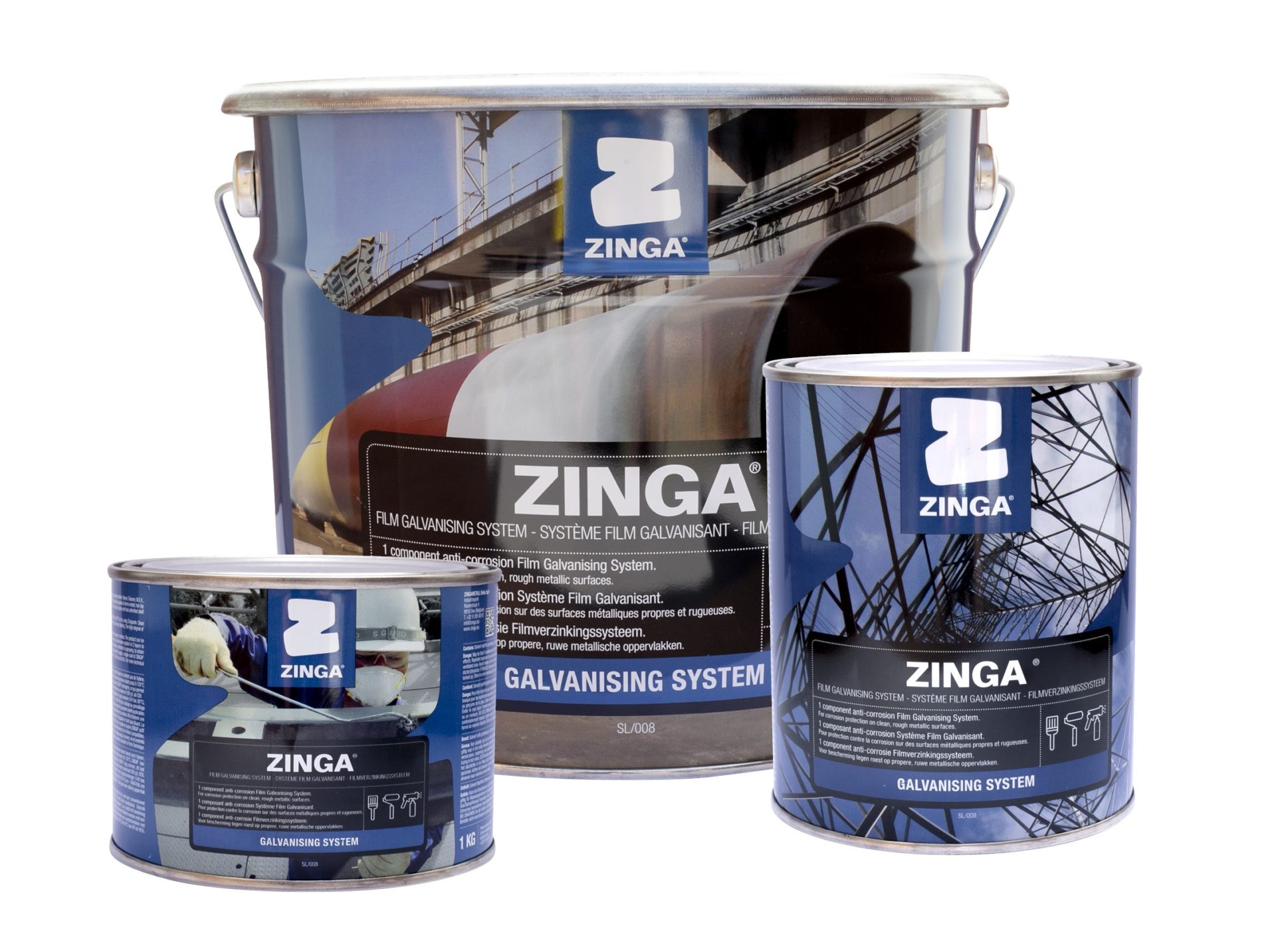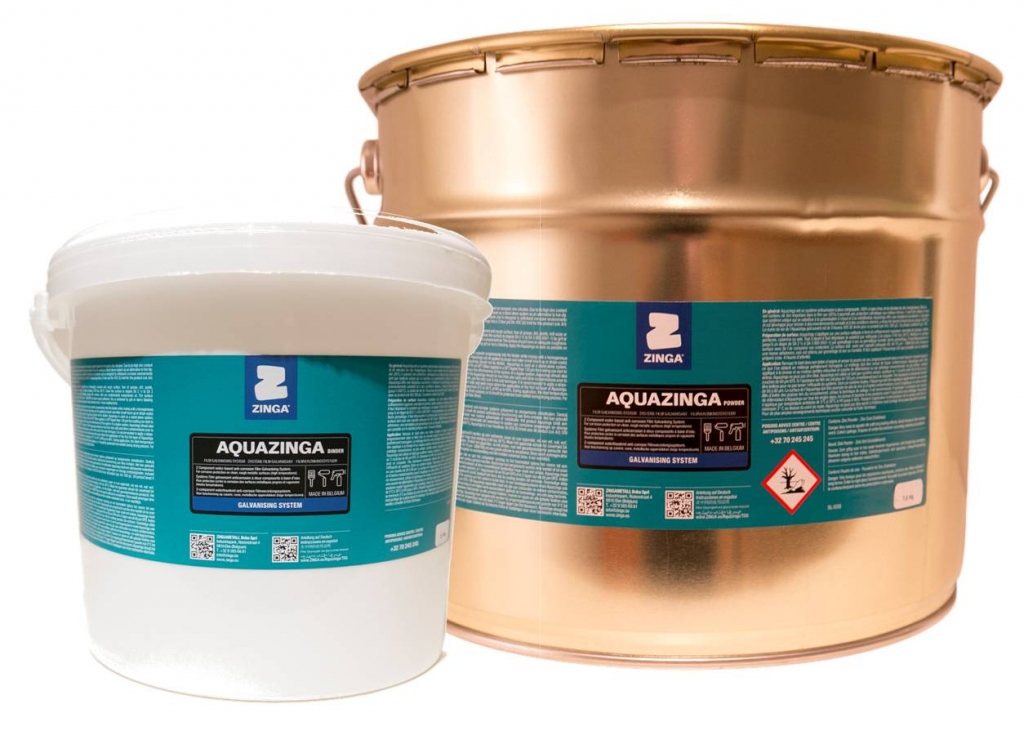Over 96% zinc in the dry film layer and a 99.995% purity. ZINGA's special formulation means that pure zinc is present throughout the entire coating film, not just the top, unlike hot-dip galvanizing.

True film galvanizing for real cathodic protection
Product Types
-
Film Galvanizing Coating
-
ZINGA
ZINGA® film galvanizing system provides cathodic protection to steel substrates creating a galvanic protective barrier with over 96% zinc content. Superior to traditional hot-dip galvanizing processes, ZINGA® provides a recoat-able surface, with exceptional adhesion to the substrate, and continues to prevent rust even in the event of mechanical damages or shrinking and expansion of metals. ZINGA® combines the long-lasting advantages of galvanizing and the usability of paint all in a single-step system. ZINGA Film Galvanizing Video
Learn More -
Aquazinga
Aquazinga is a 2-part 100% water-based anti-corrosion system based on inorganic zinc silicates. Due to its high zinc content in the dry film (92%) it provides cathodic protection to ferrous metals. It can be used as a stand alone system as an alternative to hot-dip galvanization or metallization. Aquazinga has an excellent resistance to abrasion and is designed to withstand corrosive environments and severe conditions, including high temperatures (up to 600°C).
Learn More
-


